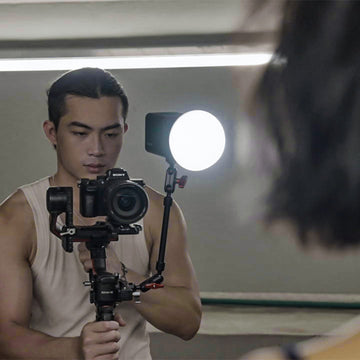Understanding the Importance of Lighting
This article will give us an insight into professional lighting for photoshoots.
When it comes to professional photoshoots, achieving perfect lighting is crucial for capturing stunning and impactful images. Whether it's a portrait, product, or fashion shoot, the right lighting can make all the difference in the final result. Here are 10 essential tips to help you master the art of lighting in your photoshoots.
1. Know Your Light Sources
Understanding the different types of light sources available, such as natural light, artificial light, and studio lighting, is essential for achieving the desired effect in your photos. Each light source has its own unique characteristics and knowing how to work with them can greatly enhance the quality of your images.
2. Use Light Modifiers
Light modifiers, such as softboxes, umbrellas, and reflectors, can help you control and shape the light to create the desired mood and atmosphere in your photos. Experimenting with different modifiers can give you a better understanding of how they affect the overall look of your images.
3. Master the Art of Balancing Light
Properly balancing the light in your photos is essential for achieving well-exposed and visually appealing images. Understanding concepts such as the exposure triangle (ISO, aperture, and shutter speed) and how they relate to light can help you achieve the perfect balance in your photoshoots.
4. Pay Attention to Shadows
Shadows can add depth and dimension to your photos, but they can also be distracting if not managed properly. Learning how to control and manipulate shadows can greatly enhance the overall quality of your images and add a sense of drama to your photoshoots.
5. Utilize Light Angles
Experimenting with different light angles can help you create unique and visually interesting images. Whether it's front lighting, side lighting, or backlighting, understanding how different angles affect the subject can help you achieve the desired look in your photoshoots.
6. Understand Color Temperature
Color temperature plays a significant role in setting the mood and tone of your photos. Whether you're going for a warm, cozy feel or a cool, modern look, understanding how to adjust the color temperature of your light sources can help you achieve the perfect ambiance in your photoshoots.
7. Create Depth with Lighting
Using techniques such as the three-point lighting setup can help you create depth and dimension in your photos. By strategically placing key, fill, and backlight sources, you can add a sense of depth and visual interest to your images, making them more dynamic and engaging.
8. Embrace Natural Light
Natural light can be a powerful and versatile light source for photoshoots. Whether it's soft, diffused light on an overcast day or golden hour sunlight, learning how to work with natural light can help you achieve stunning and organic-looking images that stand out from the rest.
9. Practice Continuous Lighting
Continuous lighting can be a great option for photoshoots, especially for beginners. It allows you to see the immediate effects of the light on your subject, making it easier to adjust and fine-tune the lighting setup to achieve the desired look in your photos.
10. Keep Experimenting and Learning
Mastering the art of lighting in professional photoshoots is an ongoing process. Don't be afraid to experiment with different lighting techniques and setups to find what works best for your style and the type of photos you want to create. Continuously learning and refining your lighting skills will help you achieve perfect lighting in your photoshoots.

